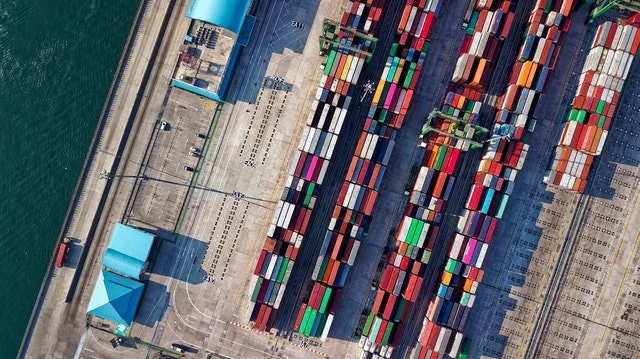11 Reasons for Capacity Variability in Your Operations
Variation in your operational capacity causes great cost and complexity. Whilst many causes are beyond one’s control, understanding them, accounting for them and (where possible) reducing them is a valuable dimension to all operations management and improvement.
Operational capacity refers to the “capability” to produce a quantity of a valuable output in a given period of time. A restaurant may have the typical “capacity” to make and serve 30 meals / hour, whilst an airport may have the capacity for 30 planes to take-off every hour. But these are averages. Operations with high capacity variation, especially unpredictable variation, must pay for expensive excess capacity to account for occasional drops or suffer patches of reduced output and the associated consequences.
Read on to learn about the external and internal causes of capacity variation.
“External” causes of capacity variability / variation
“External” causes of capacity variation are those that originate from “outside” the organization itself.
1. Weather
Weather conditions can influence operational capacity significantly, depending on the industry the organization is in. Extreme weather events such as storms, floods, or heat waves can disrupt transportation networks, damage infrastructure, and reduce workforce availability, leading to production delays and reduced output.
For those industries reliant on outdoor operations, like agriculture or construction, adverse weather can directly slow down work progress and decrease output. Additionally, weather-related supply chain disruptions, such as delayed shipments or damaged inventory, can further exacerbate operational challenges.
Whilst the weather may be uncontrollable, its effects can be reduced with preparatory action and anticipated by being aware of the forecast so disruptions are less of a surprise.
2. Labor availability
The availability of workers is another external factor of capacity variability. Employees can be caught in traffic, off work due to illness, or on strike, causing delays and ultimately reduced output of products or services.
A long or short term shortage of workers is a common reason for reduced capacity. Businesses in industries heavily reliant on manual labor, like construction, are particularly prone to disruption from these influences.
3. External problems
External problems like issues with utilities (e.g. a power outage), transportation, or infrastructure can severely impact the capacity of an organization. Many are beyond the control of an organization but again, effects of such problems can be anticipated and mitigated with preventative and prepared measures, such as back-up power.
4. Delivery issues from supplies
Delivery issues from suppliers, such as late or missed deliveries, directly impact operational capacity by disrupting production schedules and inventory management. Delays can lead to production downtime, idle resources, and potential stockouts, limiting the ability to meet customer demand.
Aligning incentives can help, perhaps financially as can clear and effective lines of communication to reduce the impact of unexpected shortages.
“Internal” causes of capacity variability / variation
“Internal” causes of demand variation are those caused from “within” the organization itself.
5. Breakdowns and maintenance
Breakdowns and maintenance impact capacity by causing production stoppages and reducing equipment availability. Unscheduled downtime disrupts workflows, leading to delays in output and therefore a temporary reduction in capacity. Appropriate preventative maintenance can help to prevent breakdowns reducing the total loss of capacity and its unpredictability.
6. Variation in worker skill-level and efficiency
Variation in the skill level and efficiency of workers impacts capacity by affecting productivity and output consistency. Disparities in skills can lead to uneven performance, potentially slowing down processes and reducing overall output.
7. Internal disruptions
Internal disruptions, (such as an unexpected visit from the divisional manager eek!), can disrupt capacity by diverting attention and resources away from regular operations. Interruptions like these may require staff to reallocate time and resources, potentially causing delays and impacting output.
8. Scheduling
Scheduling directly impacts the capacity management of operations. A schedule can be made to optimize for many different aspects of operational performance, but not all of them. The best schedule for maximum capacity will likely come with a trade off of huge work-in-progress inventory and high customer lead times. An even schedule brings stability and predictability often for lower total cost.
9. Priority orders
Part of scheduling – accommodating priority orders can be very disruptive and knock the total output capacity. Expediting priority orders can cause delays in regular production schedules by disrupting workflow and planned resource allocations.
10. Process variation
Variation in processing time causes capacity variation, introducing unpredictability in delivery capabilities. Inconsistent processes lead to fluctuating cycle times and output levels, affecting overall capacity utilization. Cooking a family barbecue won’t always take exactly the same amount of time, and this is still true if a business is barbecuing family dinners in a restaurant. However, the process is largely in an organization’s control. Reducing process variation is the cornerstone of Six Sigma – for its quality, capacity and delivery be11.nefits.
11. Internal supply issues
Running out of raw materials or coordination problems with stock management are bound to impact capacity. Delays in acquiring necessary resources will disrupt production schedules, and so efficient inventory management and proactive strategies are essential for maintaining seamless operations.
There is always variation in capacity, and it has significant consequences in output, cost and delivery, causing businesses to invest in extra buffers of capacity, inventory and time – or suffer the consequences of unpredictable and unreliable delivery to customers.
Recognizing variation for the enemy it is, understanding it, and taking steps to reduce it is a big part of the role of being an operations and supply chain manager.









